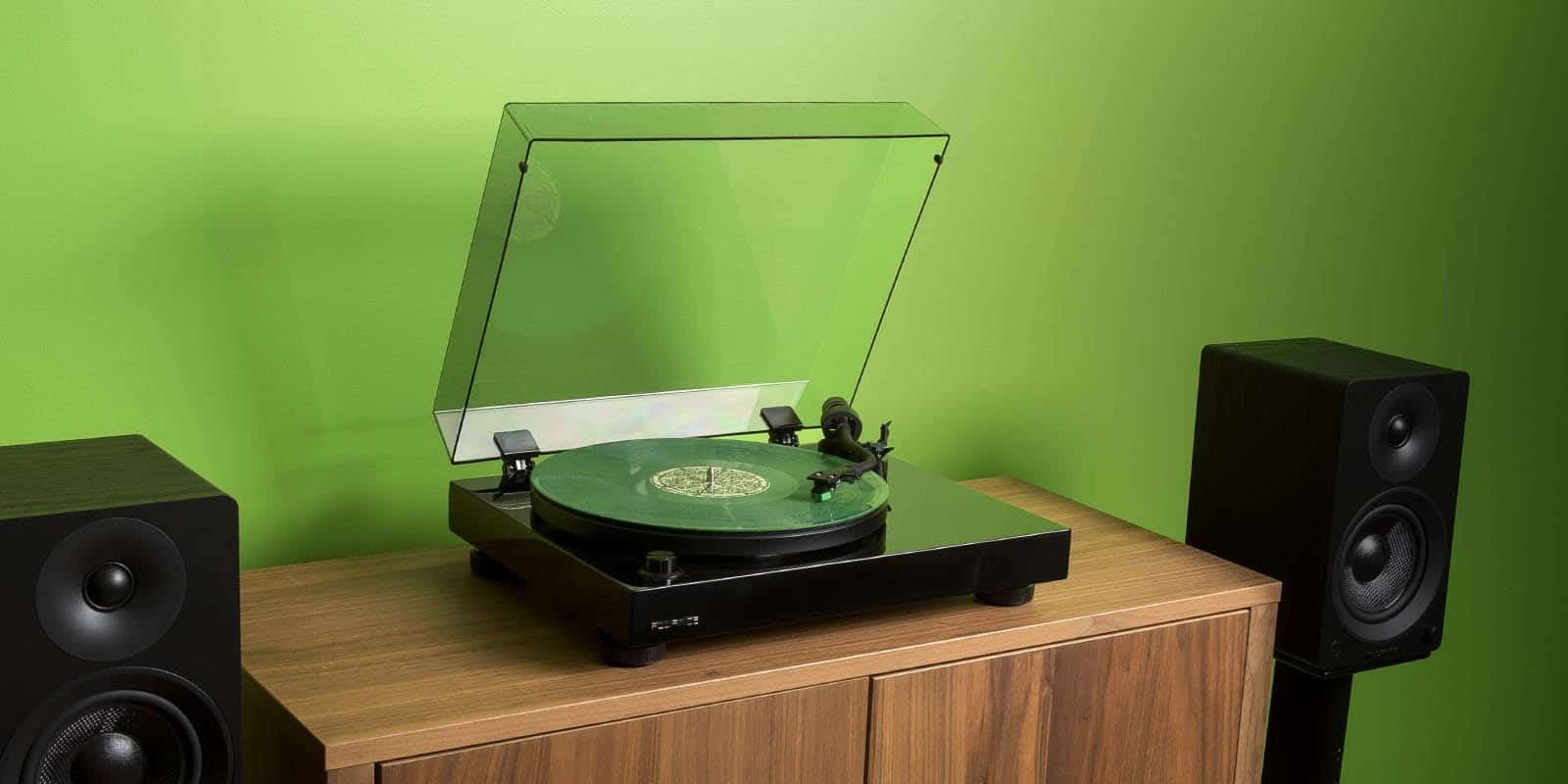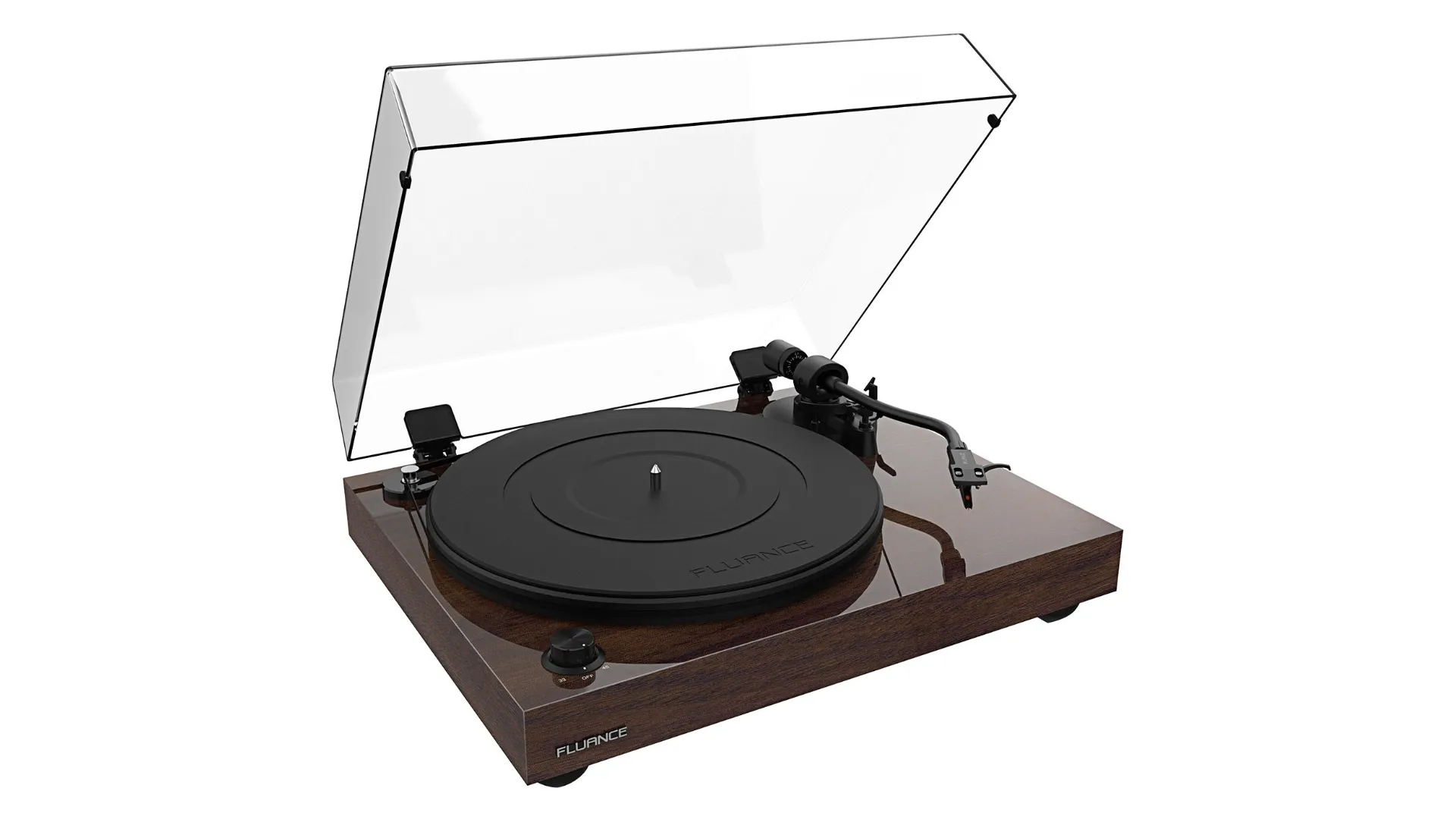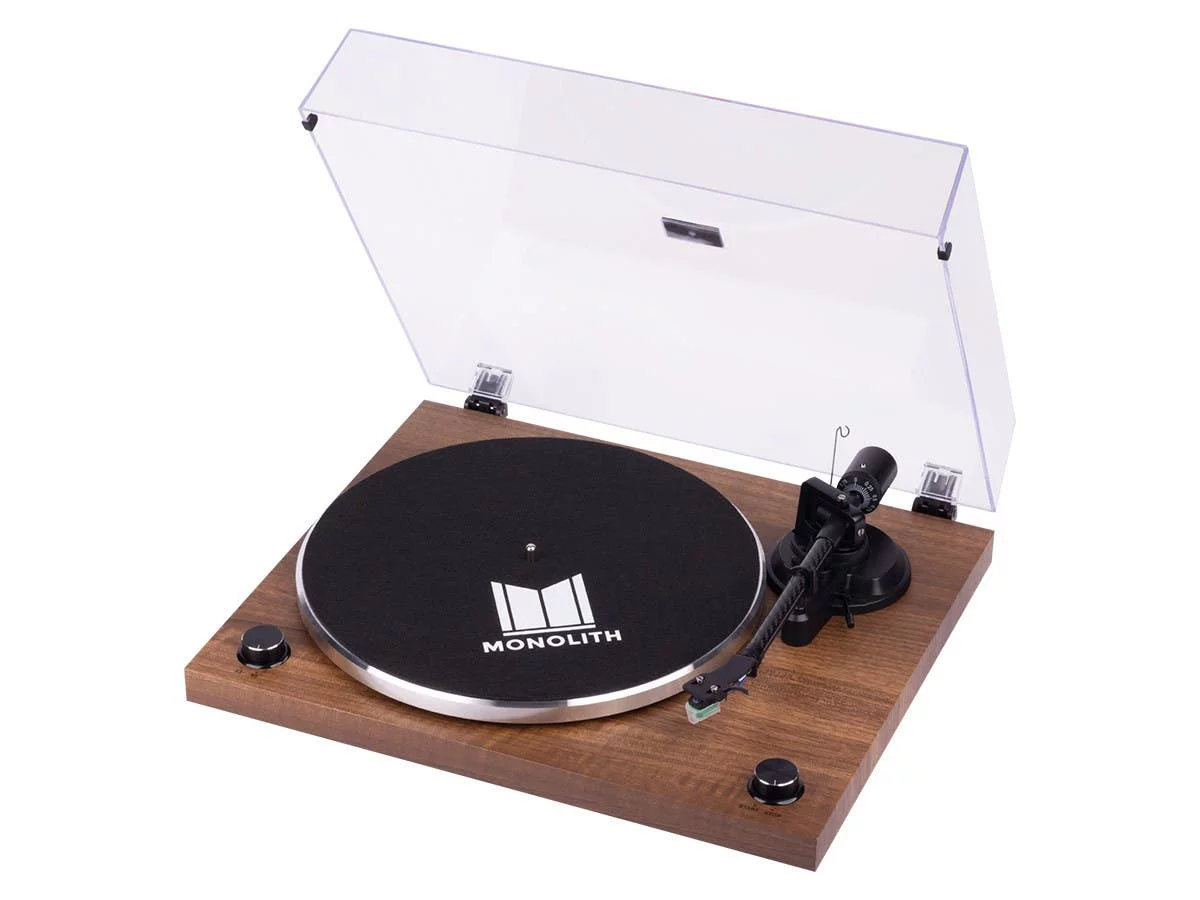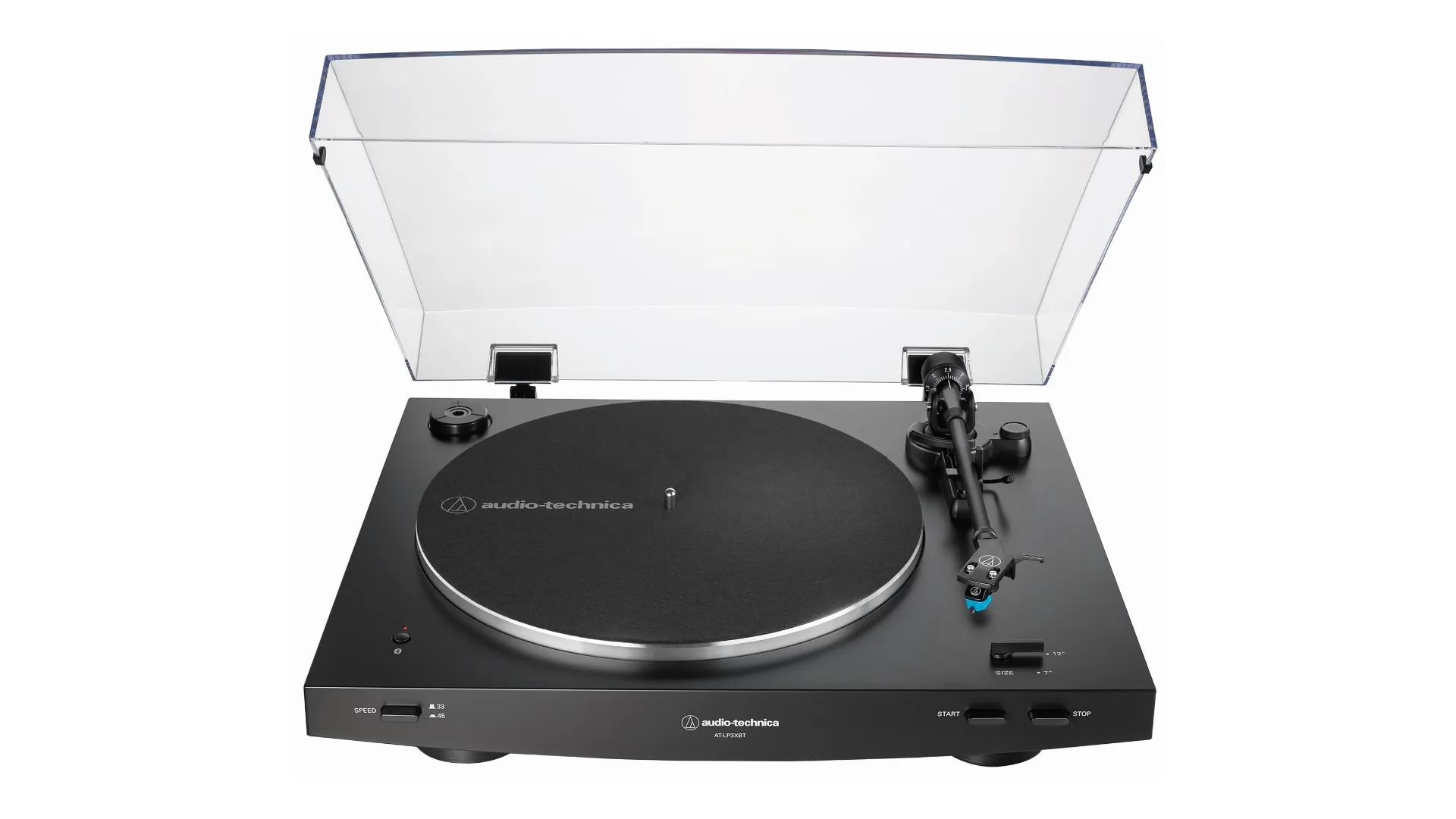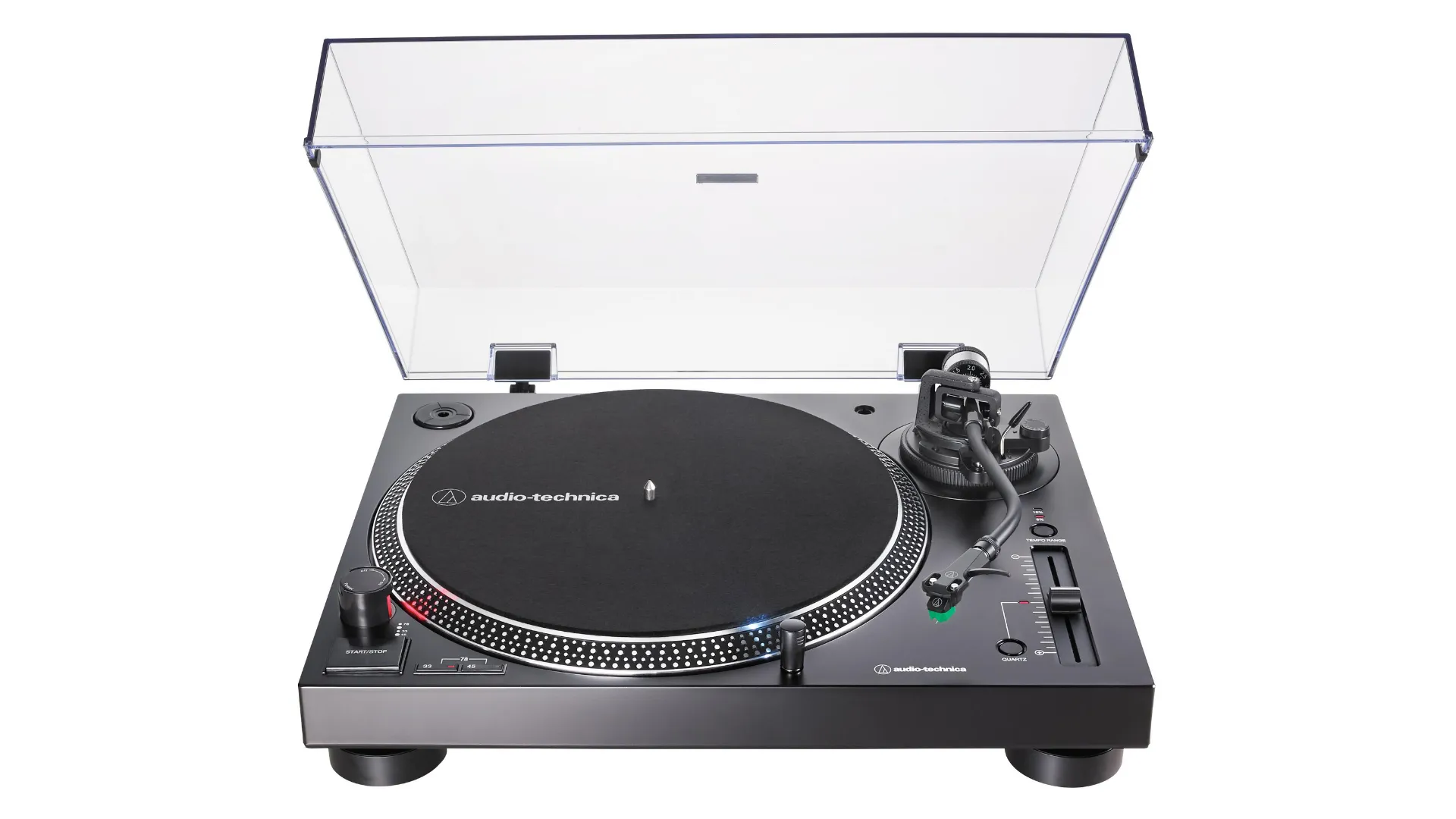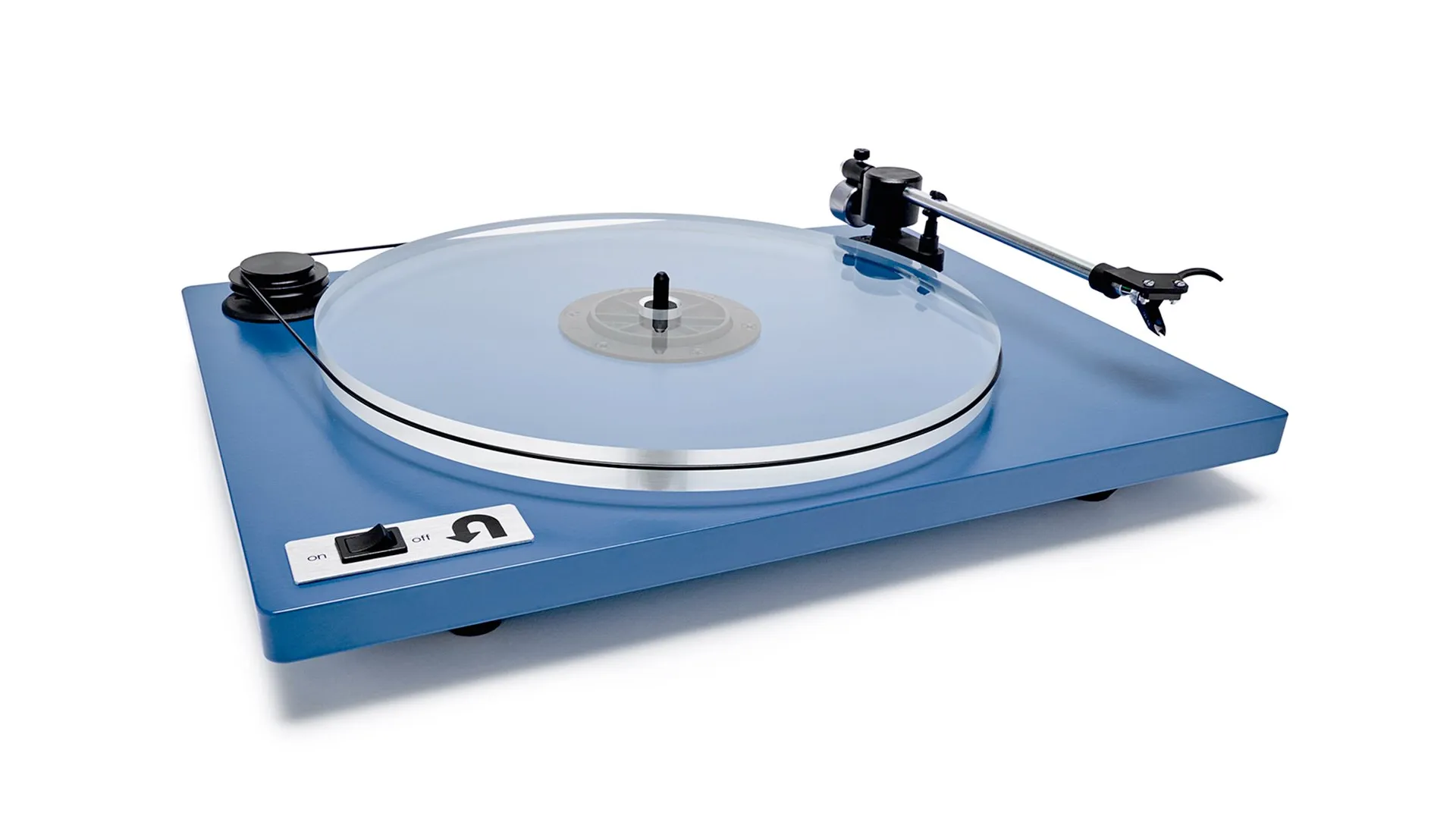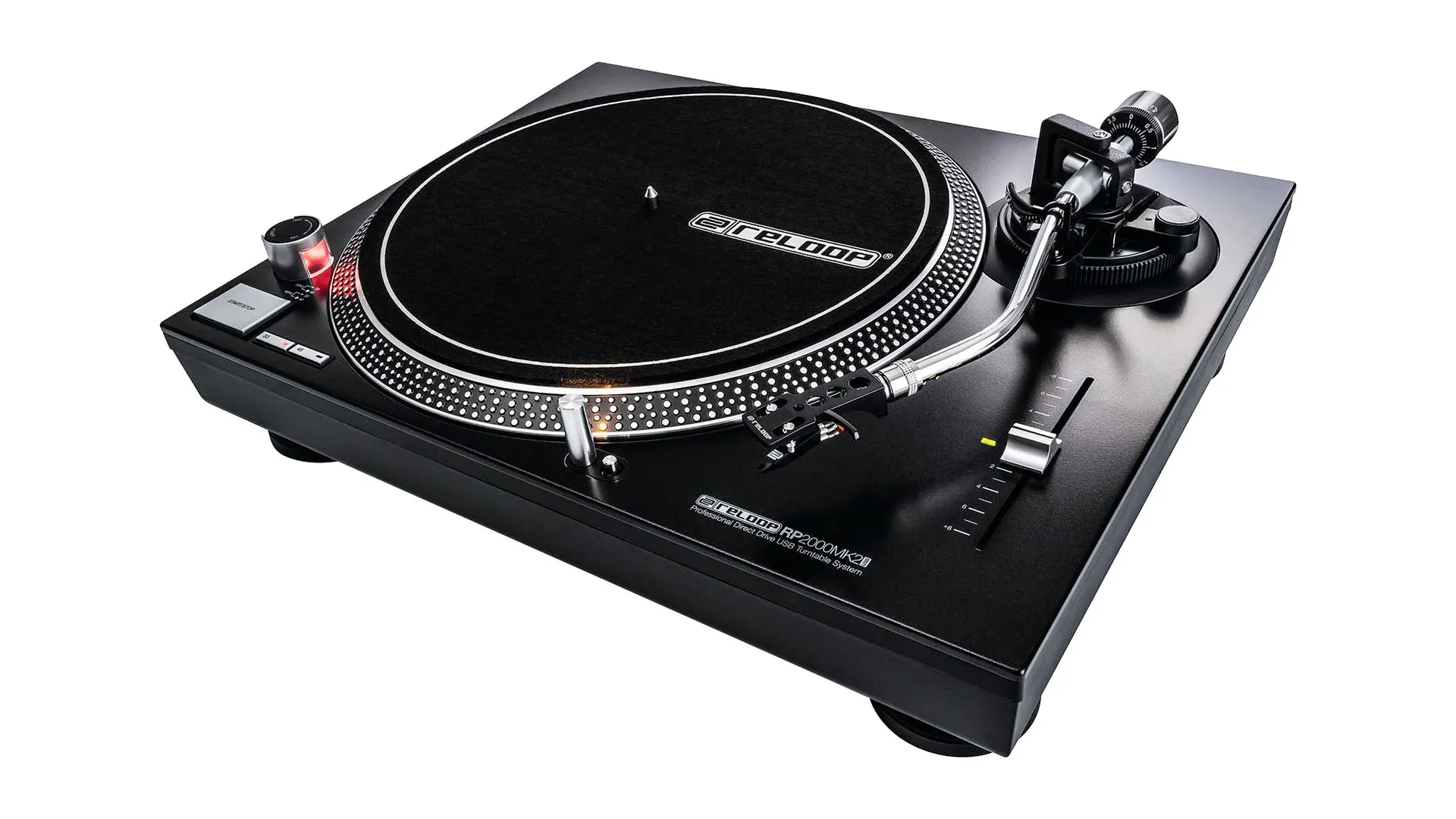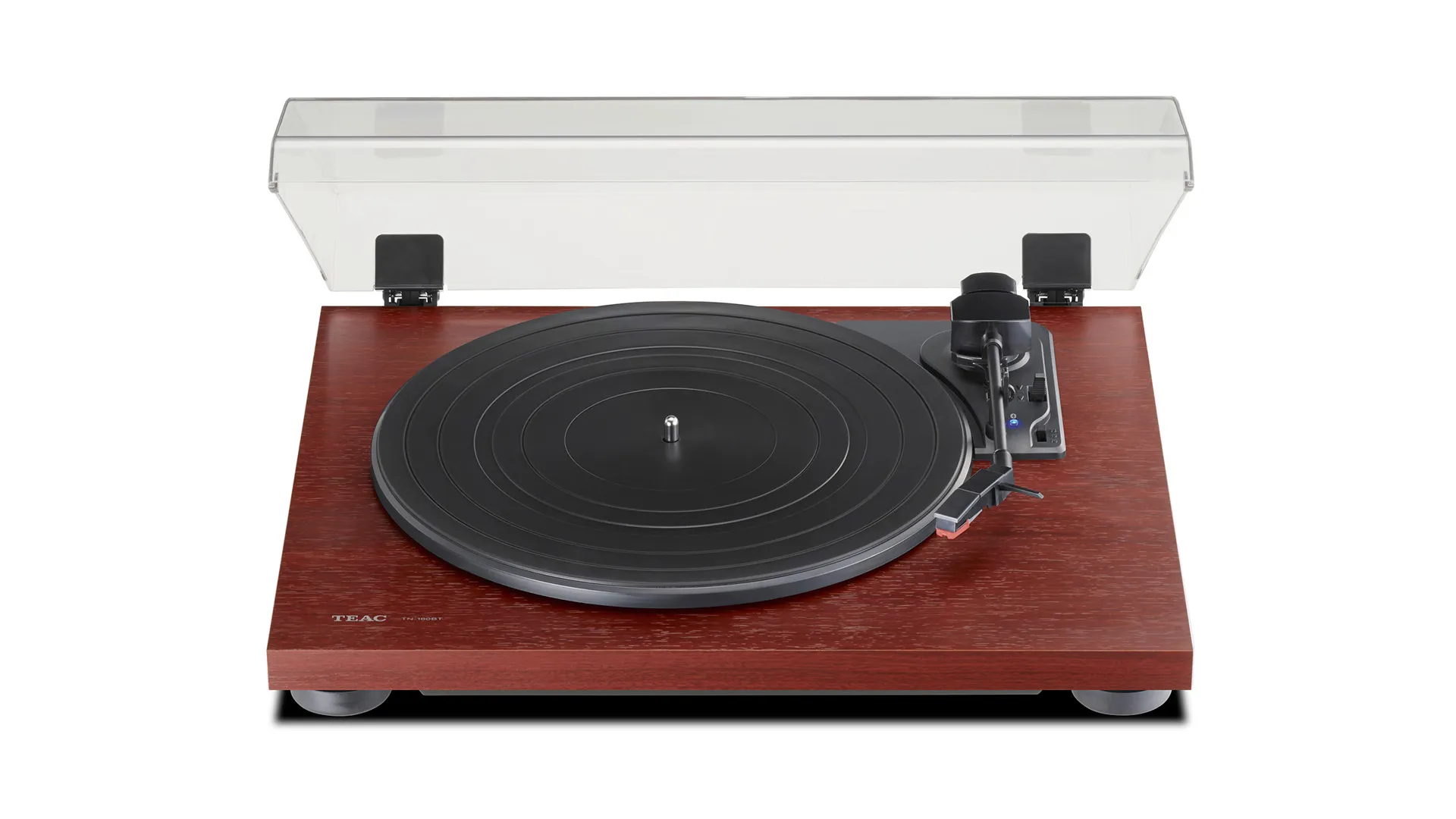Whether you’re new to vinyl or dusting off old records and coming back, a turntable is what you’ll need to transform those vinyl grooves into music.
Truth be told, a budget of $300 for a turntable isn’t much for what is traditionally an expensive hobby. That said, there are affordable record players that not only sound great but leave plenty of room for future upgrades.
Turntables offer a unique, tactile way to experience music, bringing a sense of nostalgia along with exceptional sound quality that is sometimes lost in our digital age. Whether you’re new to vinyl or dusting off old records and coming back, a turntable is what you’ll need to transform those vinyl grooves into music.
We’ve researched and tested a variety of models, assessing key factors such as sound quality, build construction, design aesthetics, ease of use, and additional features. This guide will walk you through some of the finest turntables you can get for around $300.
Included In This Guide
Here are the turntables that made it into our list of the 7 top turntables for the year:
Truth be told, a budget of $300 for a turntable isn’t much for what is traditionally an expensive hobby. That said, thanks to increasing popularity, we’re seeing more and more affordable record players that not only sound great out of the box but leave plenty of room for future upgrades.
Let’s check them out!
Fluance RT82
- Excellent build and sound quality
- Great stock cartridge
- Isolated speed control motor
- Height-adjustable vibration isolating feet
- No built-in phono preamp
The Fluance RT82 turntable is widely considered the best entry-level audiophile turntable aimed at serious vinyl collectors who don’t want to splurge excessively. Renowned for its excellent build quality and great value for money, the RT82 is seen as a significant step up from its predecessor, the RT81.
One of the distinguishing features of the RT82 is its separation of the motor from the platter, which is an upgrade from the RT81. This isolation helps to reduce any unwanted motor hum, leading to superior sound quality and control. The RT82 also features an optical sensor speed-controlled servo motor, leading to significantly less speed variation and “wow and flutter” compared to the older RT81. This new technology eliminates the need for manual speed adjustments. Finally, the RT82 is equipped with an Ortofon OM10 cartridge, an upgrade from the ATN95E used in the RT81, and it offers greater potential for future upgrades.
The RT82 omits the built-in phono preamp found in the RT81. Although it may seem counterintuitive for a more expensive model to lack this feature, the omission is strategic. It allows for a redistribution of the budget to include the better motor and cartridge, and most audiophiles prefer choosing their own preamplification solution to using a passable built-in one. However, you will have to factor this additional cost into consideration if you don’t have an external one or an amp/receiver with a phono preamp.
It’s also worth knowing about the Fluance RT83, which costs $50 more, but most likely isn’t worth the additional expense. The RT83 model offers a transition from the Ortofon OM 10 cartridge (a plastic-bodied entry-level Moving Magnet (MM) cartridge with a bonded elliptical stylus on an aluminum pipe cantilever) to the Ortofon 2M Red, which shares a similar construction. However, considering the near-identical nature of these cartridges, this switch represents more of a crossgrade rather than an upgrade.
Read full review: Fluance RT82
Monolith by Monoprice
- Multiple connection options
- USB port to digitize records
- Carbon fiber tonearm
- Clean aesthetic
- No height-adjustable legs
- Mediocre built-in phono preamp
- RCA cables not included
The Monolith by Monoprice turntable is a late but notable addition to the market, sporting a contemporary design and a wide selection of features for the price. Its construction quality is laudable, highlighted by a robust carbon fiber tonearm with a removable headshell, a feature uncommon for tables in this price range.
The Monolith exhibits versatility in its trio of output options: Bluetooth, USB, and a passable internal phono preamp, which can be bypassed if desired.
The carbon fiber tonearm with a removable headshell makes the Monoprice Monolith Turntable an interesting option for a couple of reasons; you don’t see such a well-made arm on tables this inexpensive, and the removable headshell makes it easier to upgrade the cartridge at a later date.
Compared to the Fluance RT82, the Monolith gives you Bluetooth connectivity, a built-in phono preamp, and a USB port for digitizing your vinyl collection. Meanwhile, the Fluance RT82 misses these convenience features (which often aren’t wanted by hardcore audiophiles) while giving you a slightly higher-spec cartridge, a more solid plinth, and the ability to upgrade to an acrylic platter in the future.
Overall, the Monolith by Monoprice is a good lifestyle alternative to the Fluance RT82. While the RT82 might be preferred among audiophiles, there’s no doubt the Monolith represents great bang for the buck considering the number of extra features it packs in without cutting costs elsewhere.
Audio-Technica AT-LP3XBT
- Fully automatic
- Bluetooth connectivity
- Better sounding alternatives if you don't need your turntable to be automatic
The Audio Technica AT-LP3XBT is an impressive entry-level turntable that combines vintage charm with modern functionality. Its fully automatic operation allows even a novice user to play vinyl with ease, by just pressing the “Play” switch. The tonearm lifts off, moves into position, lowers onto the record, and at the end of the record, lifts up and moves back into storage, making it as user-friendly as they come.
The turntable comes with an adjustable counterweight, anti-skate, AT-HS3 removable headshell, and an Audio Technica VM95C cartridge with a conical stylus. For those looking to dive deeper into the vinyl world, these features allow for a range of customizations, such as cartridge upgrades and ideal tracking force adjustments.
The AT-LP3XBT also has Bluetooth 5.2 aptX Adaptive Audio connectivity, giving you the option for wireless connection to your speakers or receiver. However, for a more traditional analog sound, it can be connected via RCA using the built-in phono preamp, or bypassing the built-in preamp and connecting to the phono in on an external preamp.
Compared to the Fluance RT82, the soundstage isn’t as spacious and the detail isn’t quite as microscopic, but it’s an excellent-sounding turntable nevertheless. If you prefer the added convenience of a fully automatic turntable, the AT-LP3XBT represents a strong alternative.
Read full review: Audio Technica AT-LP3XBT
Audio Technica AT-LP120X
- Better speed stability and less wow/flutter than belt-drive turntables
- Can do some light DJing
- Hollow plastic and extra DJ furniture introduces extra vibrations
- Less attractive than wood plinth turntables
For many years, the Audio Technica AT-LP120 was the best-selling under $300 turntable on the market. And for good reason. The AT-LP120 sounded great with its AT95E cartridge and being one of the few direct-drive turntables within the budget, had the flexibility of being a decent turntable for doing some DJing at home.
The AT-LP120X is the long-awaited update to the AT-LP120 and it doesn’t disappoint. Improved in several areas, the AT-LP120X features the newer AT-VM95E cartridge, a better built-in phono stage, and detachable (as opposed to hard-wired) RCA cables.
The AT-LP120X comes with a bunch of features that make it a versatile record player. It has a strobe light on the plinth and dots on the platter to indicate the record is being played at the correct speed, a speed adjust fader, anti-skate, and the ability to rip records to MP3 via USB. While these might not be essential for listening to records, many people come to appreciate them over time.
The AT-LP120 was an awesome budget turntable, and the AT-LP120X addresses its biggest issue–the poor built-in phono preamp. If you’re looking for a verstatile direct-drive turntable, the AT-LP120X is a great choice, although it’s not the straightforward recommendation it once was given the abundance of worthy alternatives in today’s market.
Read full review: Audio Technica AT-LP120X
U-Turn Audio Orbit Plus
- Acrylic platter
- Minimalist aesthetic
- Manual speed switching
- No adjustable anti-skate
- Slightly above budget
The U-Turn Audio Orbit Plus turntable, manufactured by a startup company based in Woburn, MA, is designed with a commitment to fully analog and fully manual experience. If you prefer a more minimal and hands-on turntable, this is definitely an option worth considering, although do note it does exceed our $300 budget slightly.
What sets the Orbit Plus apart is its acrylic platter, which not only enhances the aesthetic appeal but also contributes to better sound due to its acoustically inert nature. Users can choose up to six different colors and whether they want a built-in phono preamplifier, giving a level of customization that caters to individual preferences and budgets.
Unfortunately, the Orbit Plus is at a price point that’s higher than some rival models with comparable or even better performance and features. It comes with an entry-level Ortofon cartridge and lacks anti-skate adjustment. The tracking force adjustment comes in the form of a slider rather than a more convenient rotary dial. Fully manual speed switching is a chore, as it necessitates relocating the belt to a different pulley. Additionally, you’ll have to shell out an extra $40 for the cue lever.
The minimalistic styling and beautiful acrylic platter are its strongest points, but overall there are better options out there that give you more for your money.
Read full review: U-Turn Audio Orbit Plus
Reloop RP-2000 MK2
- Decent beginner DJ turntable
- Not enough torque for scratching
- Dust cover not included
- Cartridge not included
Those who wish to buy a turntable for the purposes of DJing have some different requirements when it comes to purchasing a turntable. Belt-driven turntables, while good for listening to music, aren’t suited to any kind of DJ trickery. You also want the motor to be able to generate a decent amount of torque so that the platter can get up to speed quickly.
The Reloop RP-2000M is an entry-level budget turntable that covers most features a DJ would look for. It’s far from perfect: the AT3600L stylus is very basic and the torque isn’t high enough for scratching. Nevertheless, buying a pair of these will make mixing on a budget possible.
If you’re ok with light DJing this turntable from Reloop is worth considering, but we’d still recommend doubling your budget for a Super OEM like the Reloop RP-7000 MKII which was our recommended $500 DJ turntable. Alternatively, look for a used Super OEM, although buying used does require the ability to detect issues or potential complications before purchase.
TEAC TN180BT
- Bluetooth connectivity
- Auto-return feature
- Budget stock cartridge
- Tracking weight can't be adjusted
The TEAC TN180BT turntable is an impressive meld of vintage aesthetics and modern technology, offering a seamless blend of the old and new aspects of hi-fi. This turntable stands out with its built-in Bluetooth transmitter, enabling the user to stream directly from the turntable to any Bluetooth-compatible device such as headphones or speakers.
This feature not only eliminates the hassle of loose hanging wires but also provides flexibility in the placement of the equipment, though one should consider that it still requires direct mains power, and the Bluetooth has a limit of around 30 feet/10 meters.
Besides that, the TN180BT houses a three-speed belt-driven platter capable of 33/45/78 RPM with an auto-return mechanic for when the record is done. It also includes a built-in phono stage, eliminating the need for a separate pre-amp. The unit is encased in a high-density MDF cabinet for improved resonance reduction.
Unboxing to listening takes a brief amount of time as the stylus is already connected, the counterweight is set, and the Bluetooth is easy to pair. In terms of sound quality, the default setting offers decent sound quality, but it’s still using a budget cartridge and without the ability to adjust the tracking weight, upgrade options are limited.
Overall, the TN180BT is a solid record player that has trouble standing out in a competitive market. Sound quality-wise, the Fluance RT82 comfortably outperforms it. And the Monolith by Monoprice turntable gives you the same convenience features while boasting better sound. The TN180BT costs less, has auto-return, and can potentially play 78 records. But these are all relatively minor advantages that mean the TN180BT isn’t quite up there.
Buyer FAQs
Q1: What is the difference between a belt-drive and a direct-drive turntable?
A belt-drive turntable involves an elastic belt that connects the motor to the platter, while a direct-drive turntable directly links the motor to the platter. Belt-drive turntables have the advantage of reduced noise and vibration, but may require belt replacement over time, and speed can be slightly less consistent than direct-drives.
Direct-drive turntables offer more consistent speeds and strong torque, making them a popular choice for DJs. However, they can sometimes transmit more motor noise and vibration to the platter, potentially affecting sound quality.
Q2: What are the advantages and disadvantages of elliptical and conical styluses?
An elliptical stylus has a narrower profile, allowing it to make better contact with the record grooves and retrieve more detail. However, this design can lead to more record wear over time and is generally more expensive.
A conical stylus, on the other hand, has less contact with the record grooves, resulting in less wear and potentially longer record life. They are typically more affordable but may not retrieve as much detail from the record.
Q3: Why does the cartridge matter in a turntable?
The cartridge houses the stylus and plays a significant role in sound quality. Different cartridges provide different levels of clarity, warmth, and detail in the sound produced. Some turntables come with pre-mounted cartridges, but these can often be upgraded.
Q4: What is a phono preamp, and do I need one?
A phono preamp (or preamplifier) boosts the signal from the turntable to a level that other audio devices, like stereos or speakers, can work with. Some turntables come with built-in preamps, while others require an external one. If the turntable doesn’t have one, you’ll need to buy a separate preamp unless your amp or receiver already includes a phono input. However, most built-in preamps aren’t great, so buying a separate one and bypassing the built-in one is recommended anyway.
Q5: What are the important considerations when looking at the tonearm?
The tonearm holds the cartridge and stylus as they move across the record. Its weight, shape, and material can all affect sound quality. A properly balanced and calibrated tonearm can greatly reduce wear on your records and enhance sound reproduction.
Q6: What is wow and flutter, and why does it matter?
Wow and flutter refer to variations in speed during playback. Lower levels of wow and flutter are better, as high levels can distort the music and cause pitch variations.
Q7: How does platter weight and material affect sound quality?
A heavier platter is generally better because it can help reduce vibration and maintain a consistent speed. Similarly, the material matters because it can affect the turntable’s resonance. For example, a metal platter might provide a slightly brighter sound, while a glass or acrylic platter might offer a more neutral sonic profile.
Q8: Do I need to replace the stylus, and how often?
Yes, the stylus will wear over time and need to be replaced. The frequency of replacement depends on the quality of the stylus and how often you use your turntable, but typically it should be replaced every 1,000 to 2,000 hours of playtime. Always refer to the manufacturer’s recommendations.
Conclusion
Increasing your budget from $200 to $300 yields a significant improvement in sound quality. Turntables that cost under $200 typically use the spherical Audio Technica AT3600L cartridge which lacks detail at the higher and lower ends, resulting in a fairly flat and dull sound.
In this list, most of the turntables are using diamond elliptical cartridges which sound superior to the likes of the AT3600L.
For most people, the Fluance RT82 is the recommended record player to get, and even if your budget can be increased, you should be looking at spending on other areas of the system (preamp, speakers etc.) before the turntable itself, because the RT82 is comparable to $500 turntables.
However, if you have more specific use-cases, such as DJing or wanting to digitize records, then one of the other turntables in this buying guide might make more sense.

